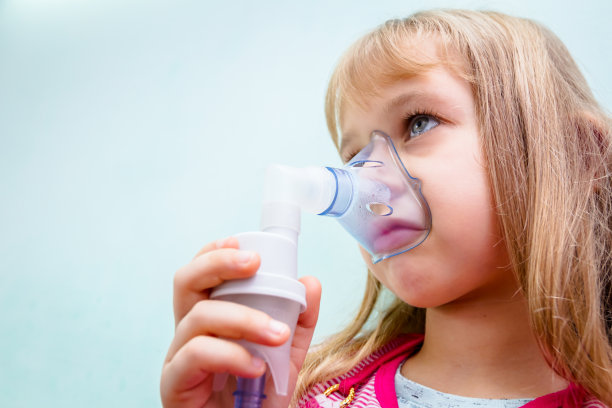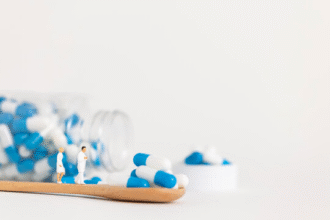Chronic Sinusitis
Chronic sinusitis (chronic rhinosinusitis) is inflammation of the paranasal sinuses and nasal passages lasting ≥12 weeks, often following recurrent or inadequately treated acute sinusitis. It most commonly affects the maxillary and ethmoid sinuses.
Key Points
- Defined by ≥12 weeks of sinonasal symptoms and objective evidence of sinus inflammation.
- Multifactorial etiology: infection, allergy, anatomical variants, impaired mucociliary clearance.
- Management includes medical therapy (antibiotics, steroids, saline), endoscopic sinus surgery for refractory cases, and ongoing nursing care.
- Nursing assessment and education are essential to optimize outcomes and prevent recurrence.
Pathophysiology and Etiology
- Infectious: Bacterial (e.g., Streptococcus pneumoniae, Haemophilus influenzae, Moraxella catarrhalis), fungal (in immunocompromised patients).
- Allergic: IgE-mediated inflammation contributes to edema and obstruction.
- Anatomical: Deviated septum, concha bullosa, ostiomeatal complex narrowings.
- Other factors: Ciliary dysfunction (e.g., cystic fibrosis, smoking), systemic diseases, nasal polyps, foreign bodies, tumors.
Clinical Features
- Nasal congestion or obstruction.
- Purulent rhinorrhea or postnasal drip (often unilateral in odontogenic cases with foul odor).
- Facial pain or pressure worsened by bending forward or cough.
- Decreased sense of smell (hyposmia or anosmia).
- Fatigue, headache, cognitive complaints (e.g., memory loss, difficulty concentrating).
- Less common: visual changes (ethmoid/sphenoid involvement), fever, dental pain.
Assessment and Diagnosis
History and Physical Exam
- Duration of symptoms ≥12 weeks.
- Frequency of acute episodes and prior treatments.
- Allergy history, concomitant asthma or atopic disease.
- Examine nasal mucosa for edema, purulence, polyps; palpate sinuses for tenderness.
Investigation
- Nasal endoscopy: purulent discharge, mucosal edema, polyps, anatomical variations.
- Sinus CT scan: extent of mucosal thickening, opacification, osteomeatal complex block.
- Laboratory: allergy testing, culture from sinus aspirate or endoscopic swabs for refractory/invasive cases.
Differential Diagnosis
- Migraine or tension headache.
- Dental infections (odontogenic sinusitis).
- Nasal polyps or neoplasm.
- Allergic rhinitis without sinus involvement.
- Cluster headache.
Medical Management
First-line
- Saline nasal irrigation: 0.9%–3% saline rinse twice daily to improve mucociliary clearance.
- Intranasal corticosteroids: fluticasone, budesonide sprays daily for 4–8 weeks.
Adjunctive therapies
- Antibiotics: culture-guided for 7–21 days (e.g., amoxicillin-clavulanate, doxycycline, levofloxacin for penicillin-allergic patients).
- Oral corticosteroids: short taper (e.g., prednisone 30–40 mg for 5–7 days) for severe mucosal edema or polyps.
- Antihistamines or montelukast: if allergic component present.
- Mucolytics: guaifenesin or inhaled acetylcysteine to thin secretions.
Surgical Management
- Functional endoscopic sinus surgery (FESS): restore drainage and ventilation by widening ostiomeatal complexes.
- Balloon sinuplasty: dilates sinus ostia; less invasive in select patients.
- Indications: failure of maximal medical therapy, complications (mucocele, orbital involvement), anatomical obstruction.
Nursing Care and Patient Education
Assessment
- Obtain thorough history: symptom onset, severity, triggers, prior interventions.
- Evaluate psychosocial factors: stress, sleep quality, activity level.
- Monitor systemic symptoms (fever, fatigue) and local signs (nasal discharge, facial pain).
Interventions
- Nasal irrigation training: teach correct technique and hygiene to prevent infection.
- Medication adherence: reinforce proper use of nasal sprays and completion of antibiotic courses.
- Symptom monitoring: maintain daily logs of congestion, pain, drainage.
- Environmental control: advise on allergen reduction (HEPA filters, humidity control).
- Pain management: non-opioid analgesics (acetaminophen, NSAIDs) as needed.
Discharge Planning
- Recognize red flags: worsening pain, high fever, visual changes—seek immediate care.
- Schedule follow-up appointments for endoscopy or imaging as recommended.
- Encourage smoking cessation and hydration.
Prevention and Follow-Up
- Maintain regular nasal hygiene; use saline irrigation indefinitely if prone to recurrence.
- Annual allergy evaluation for persistent sinonasal symptoms.
- Postoperative care: frequent saline rinses, avoid nose blowing for 2 weeks, attend FESS follow-up.
Referral Criteria
- Refractory disease despite optimal medical therapy.
- Complications: orbital cellulitis, intracranial extension, mucocele.
- Consider ENT or allergy/immunology specialist for complex cases.







